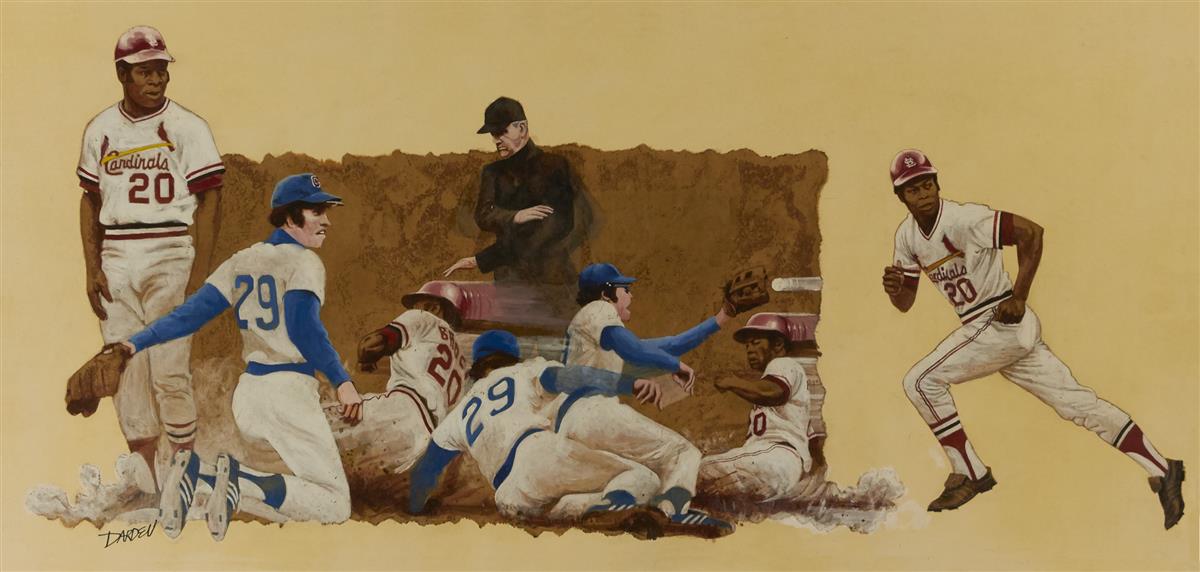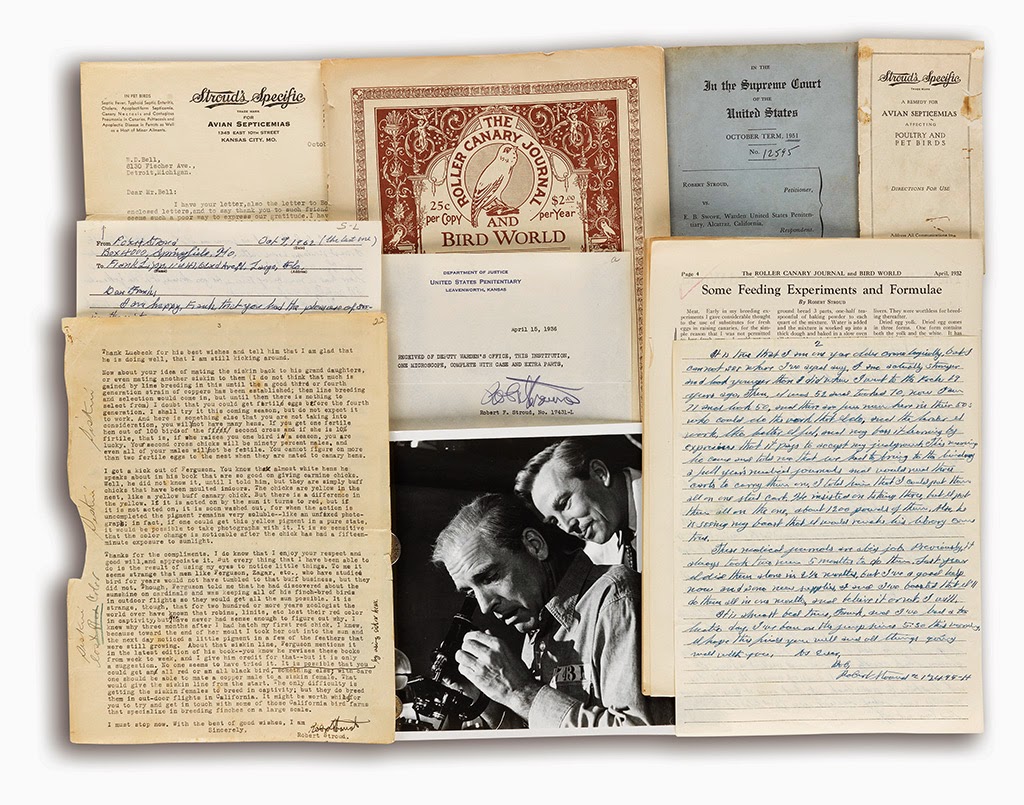Auctions 101: Provenance Research
Stattler explains the detective work that sometimes goes into researching an item’s history and provenance
Auction houses keep one foot in the past, and one foot in the future. We are always preparing for the next auction, on the hunt for the freshest new consignments, and always looking for new ways to embrace technology. Yet the things we sell are often quite old. They often have a long and complicated history, either evident through old inscriptions and labels, or discernable through painstaking research into old dealer and auction catalogs.
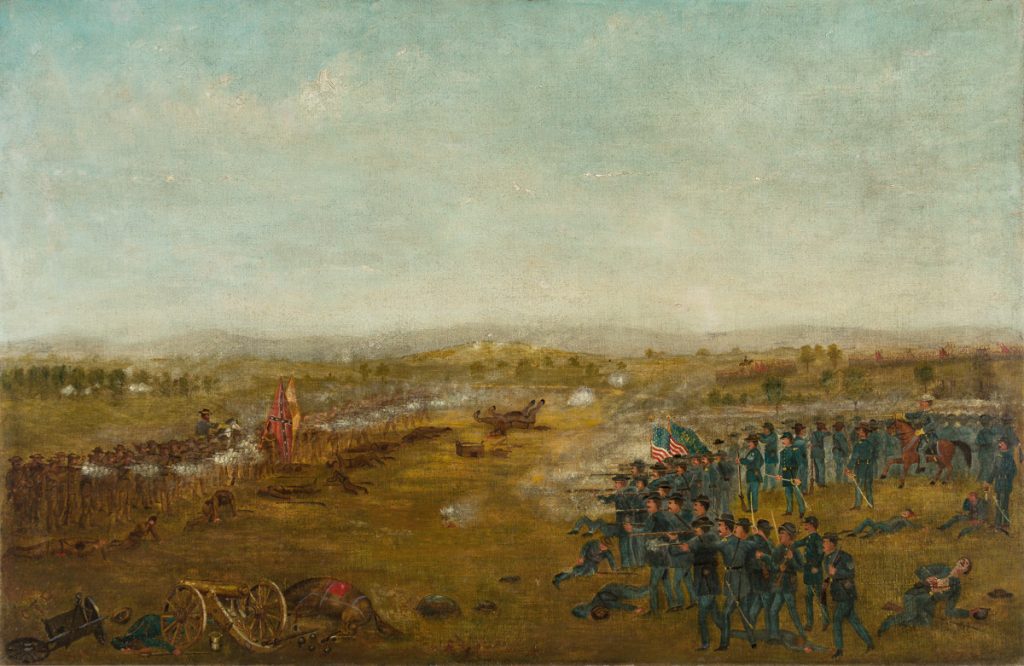
Our September 29, 2022, Printed & Manuscript Americana auction offers a prime example of provenance research. The sale features a large Civil War battlefield view of the 16th Maine Volunteers at Gettysburg. It is signed only as “CFL.” We were able to determine that only one CFL fought with that regiment at Gettysburg, Sergeant Cherbury F. Lothrop. Sergeant Lothrop went on to a distinguished career as an educator in Maine, but the only hint we found of his artistic proclivities was his name on a list of “Photographs of Paintings” at the Winterthur Library, which graciously provided a copy from their files. As it turns out, Argosy Books in Manhattan sent Winterthur a photograph of the same painting circa 1978, probably hoping that they would buy it. The library made the same tentative attribution to Sergeant Lothrop. The painting was not sold to Winterthur—it was purchased by our consignor’s mother, who passed in 1981. Now we know where she acquired it, and feel more confident in our attribution of the artist.
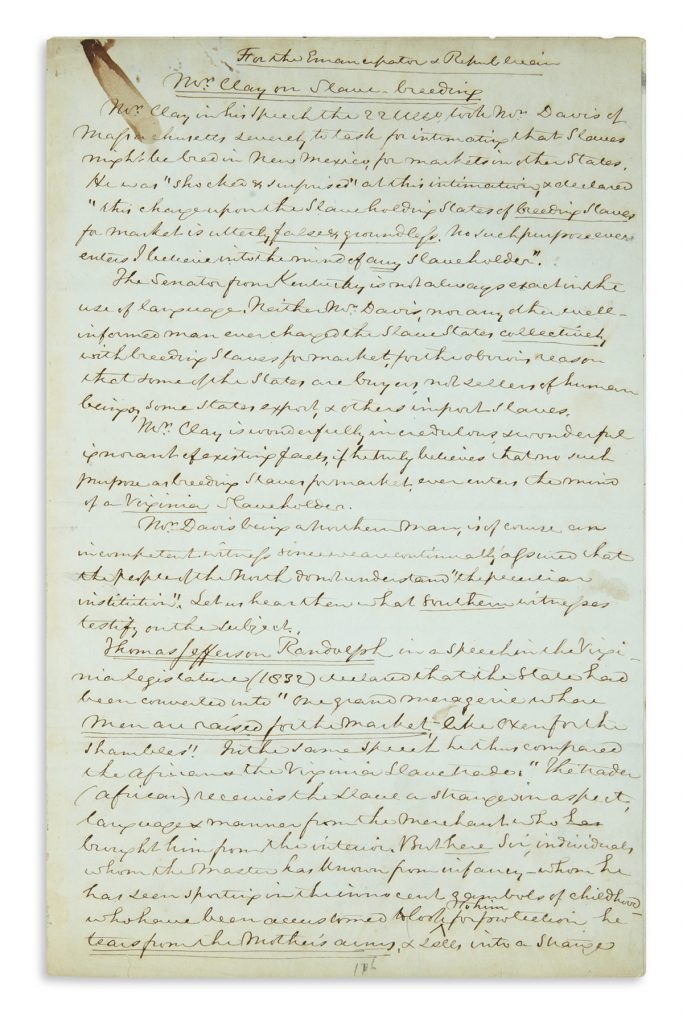
Left: William Jay, For the Emancipator & Republican: Mr. Clay on Slave Breeding, 1850. Sold May 2020 for $3,500.
Sometimes the provenance stretches back much further. A couple of years ago, we received on consignment an 1850 manuscript essay rebutting the claims of presidential candidate Henry Clay that “the charge upon the slaveholding states of breeding slaves for market is utterly false & groundless,” written for the abolitionist newspaper The Emancipator. We found that the same essay had been listed by the famed autograph dealer Walter Benjamin in 1894 for the sum of $3. The same essay brought $3,500 in our May 2020 African Americana sale—a substantial 116,567% return, although the same $3 wisely invested in stocks for more than a century might have topped that.
Related Reading:
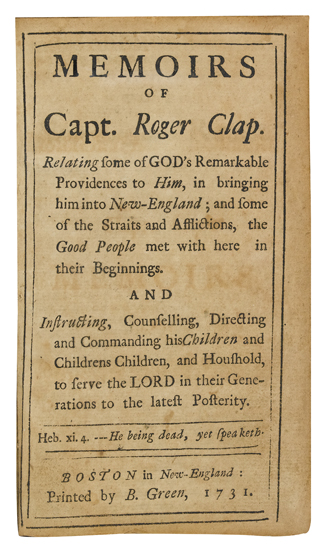
Right: The Memoirs of Capt. Roger Clap, an important history with the first American genealogy, Boston, 1731. Sold March 2009 for $3,840.
Sometimes material returns to Swann after a few years or a few decades. In 2009 we handled a scarce 1731 Boston-printed book, The Memoirs of Capt. Roger Clap—which is considered to be the first genealogical work in America. Research through dusty volumes of American Book Prices Current showed that it was the first time that any copy of the Clap memoir had been at auction since March 1943—at sale #42 held by an upstart Manhattan gallery called Swann Galleries which had been in operation for scarcely a year. An examination of the yet dustier bound set of Swann’s printed catalogues showed that it was the same copy, with matching inscriptions, and that it had hammered for $55 back in 1943. It brought $3,840 the second time around.
